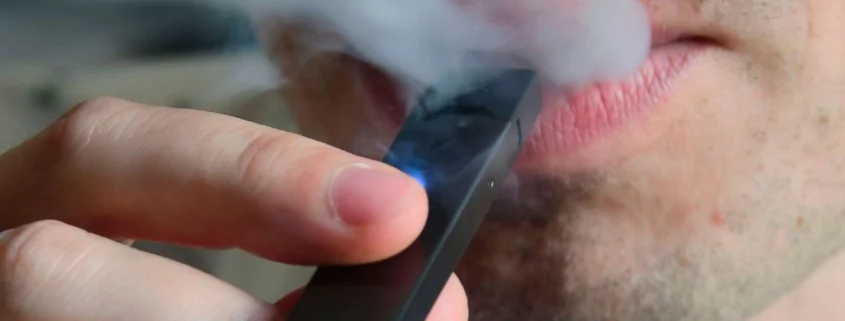The Rising of Vaping and Decline of Cigarette Use in USA
Smoking has long been a persistent habit among American adults, spanning generations. However, recent findings suggest a significant shift in these habits. A new study by the Centers for Disease Control and Prevention (CDC) shows a substantial decline in cigarette use among adults in the United States, marking a significant milestone in public health.
The Young Adults
Surprisingly, the age group of 18-29, once the most likely to smoke, now ranks as the second-least-likely to engage in this habit. This group now follows adults over 65, who remain the least likely to smoke. The decline in young adults picking up the habit can largely be attributed to the surge in public health campaigns over recent years.
The Vaping
While traditional cigarette use is on the decline, there’s been a corresponding rise in the use of e-cigarettes and vapes, especially among young adults and teenagers. These devices have gained popularity due to the misperception that they pose fewer health risks than traditional cigarettes.
The Expert Opinion
According to Dr. Andrew Miller, a respected pulmonologist at Texas Health Fort Worth, this shift towards vaping does not necessarily mean improved public health. He explained that despite common misconceptions, e-cigarettes and vapes carry many of the same health risks as traditional cigarettes.
“Vaping is clearly unsafe,” Dr. Miller stated. “People feel it’s safer because they’re doing it less often. But it’s not the timing that matters; it’s the volume of smoke.”
The Equivalent
Consider this: just one milliliter of vape juice is equivalent to smoking five packs of traditional cigarettes. This staggering comparison underscores the potential harm e-cigarettes can cause, despite their perceived harmlessness.
The Risks
Smoking and vaping put individuals at risk for numerous health issues, some of them severe. According to the CDC, these include oral cancer, lung cancer, stomach cancer, cancer of the esophagus, reduced lung function, and decreased fertility. These health risks highlight the urgency for continued public health education about the dangers of smoking and vaping.
Conclusion
The declining trend of cigarette use among US adults presents a beacon of hope for the future of public health. However, the rising popularity of vaping, especially among the young, poses a new challenge. With the same risks but a different guise, the fight against nicotine addiction continues.
As we step into the future, we must ask ourselves: Can we continue to build on this momentum and create a truly smoke-free generation?
FAQs
What has led to the decline in cigarette use among young adults?
The rise in public health campaigns over the years is primarily credited for the decrease in young people smoking.
Are e-cigarettes and vapes safer than traditional cigarettes?
Despite common misconceptions, e-cigarettes and vapes carry many of the same health risks as traditional cigarettes.
What are some health risks associated with smoking and vaping?
According to the CDC, these include oral cancer, lung cancer, stomach cancer, cancer of the esophagus, reduced lung function, and decreased fertility.
Is the volume of vape smoke a health concern?
Yes, just one milliliter of vape juice is equivalent to smoking five packs of traditional cigarettes.
What are the future implications of the shift from smoking to vaping?
While it’s positive to see traditional cigarette use decline, the rise in vaping, especially among young adults, poses a significant public health concern due to its associated health risks.
- Is Vaping While Driving Illegal in New Mexico? - June 28, 2025
- Vaping Laws in New Mexico: Guide of Age, Flavors, Tax & Rules - June 28, 2025
- Vaping Laws in New Hampshire: A Comprehensive Guide for You - June 27, 2025







